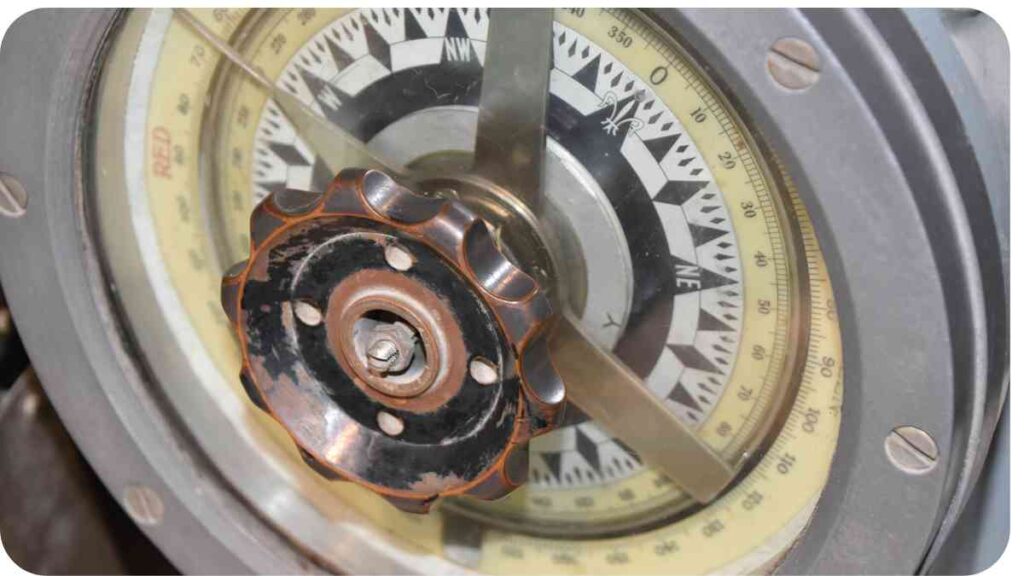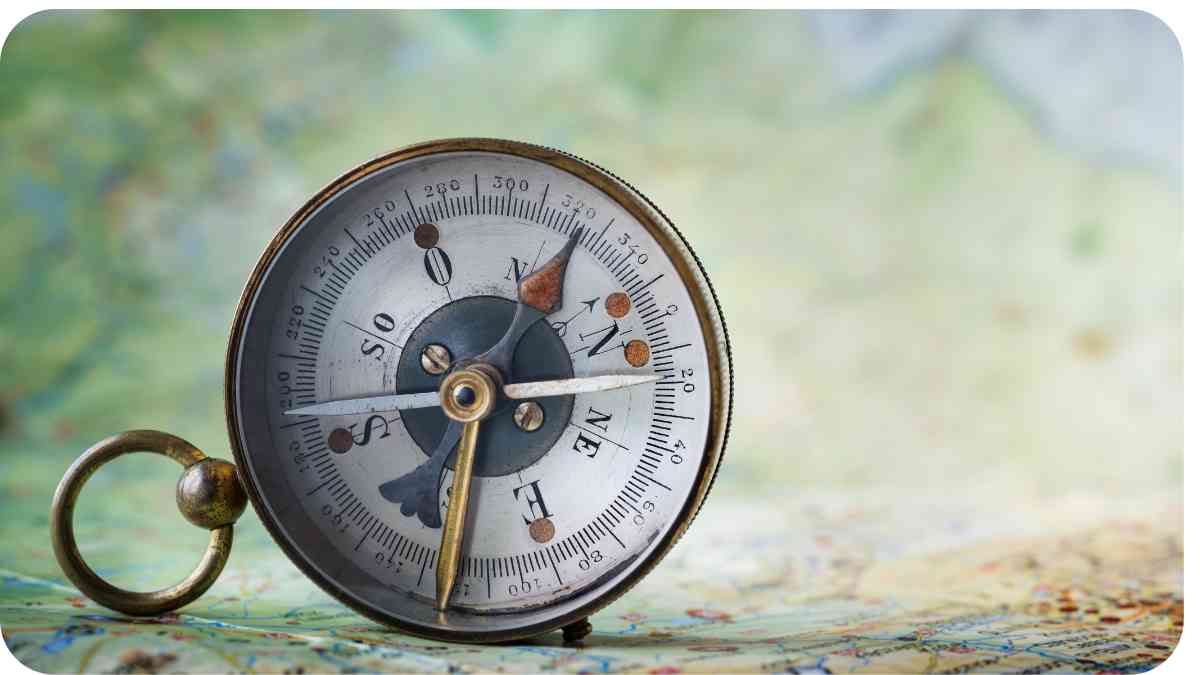Navigating through the wilderness demands precision, and a reliable compass is a crucial tool for any outdoor enthusiast. In this comprehensive guide, we’ll delve into the nuances of Suunto compass calibration.
As a seasoned explorer, I’ve encountered various challenges and triumphs in the field, making this article a blend of expertise and real-world experiences.
| Takeaways |
|---|
| 1. Magnetic declination varies globally; understand your region’s values for accurate adjustments. |
| 2. Suunto compasses offer advanced features; choose a model based on your specific needs and preferences. |
| 3. Follow a meticulous calibration process, considering environmental factors and pre-calibration checks. |
| 4. Expert tips and troubleshooting advice ensure optimal compass performance in challenging scenarios. |
| 5. Suunto compass maintenance is crucial; follow the checklist for cleaning, storage, and battery replacement. |
| 6. Real-life experiences and user testimonials showcase the reliability of Suunto compasses in diverse terrains. |
| 7. Explore the future of compass technology, including digital apps, augmented reality, and smart navigation devices. |
| 8. Further reading resources provide additional insights, community discussions, and official support for Suunto compass users. |
2. The Importance of Compass Calibration

2.1 Understanding Magnetic Declination
Before delving into calibration, it’s essential to grasp magnetic declination’s significance. Table 1 provides global magnetic declination values, offering a quick reference for accurate adjustments.
Achieving accurate fitness metrics is crucial for an effective workout routine. Learn how to calibrate your Fitbit to ensure precise step counts and heart rate measurements, enhancing the overall effectiveness of your fitness tracking.
Table 1: Global Magnetic Declination Values
| Location | Magnetic Declination |
| North America | -10° |
| Europe | +2° |
| Australia | +12° |
| Africa | -5° |
| Asia | +6° |
2.2 Impact of Environmental Factors
Environmental conditions play a pivotal role in compass accuracy. Table 2 outlines factors affecting calibration, aiding users in adapting to various scenarios.
Table 2: Environmental Factors Affecting Compass Calibration
| Factor | Impact on Calibration |
| Proximity to metals | Distorted readings |
| Electronic devices | Interference |
| Extreme temperatures | Fluid instability |
| Altitude changes | Needle sensitivity |
| Magnetic anomalies | Calibration drift |
3. Suunto Compass Features
3.1 Overview of Suunto Compass Technology
Suunto compasses boast cutting-edge technology. This section provides a detailed exploration of Suunto’s innovative features.
Maximize your performance on the tennis court by addressing common issues with your racket strings. Discover a comprehensive guide to resolving Wilson racket string problems, ensuring your equipment is in optimal condition for every match.
3.2 Notable Suunto Compass Models
Table 3 compares various Suunto compass models, aiding users in selecting the most suitable one for their adventures.
Table 3: Suunto Compass Models Comparison
| Model | Features |
| Suunto A-30 | Lightweight and compact design |
| Suunto MC-2 | Adjustable declination, global needle |
| Suunto KB-14 | Precision sighting and clinometer |
4. Steps for Suunto Compass Calibration
4.1 Pre-Calibration Checklist
Ensuring a smooth calibration process begins with a thorough pre-calibration checklist. Let’s explore the essentials before diving into the on-field calibration steps.
4.2 On-Field Calibration Process
Table 4 breaks down the step-by-step guide to calibrating your Suunto compass, simplifying the process for both novices and experienced navigators.
Table 4: Step-by-Step Compass Calibration Guide
| Step | Action |
| Step 1 | Find an open area away from metallic objects |
| Step 2 | Hold the compass level |
| Step 3 | Rotate the compass horizontally |
| Step 4 | Rotate the compass vertically |
| Step 5 | Confirm calibration success |
5. Expert Tips for Optimal Calibration
5.1 Professional Insights
Drawing from years of professional experience, I offer valuable insights to enhance your compass calibration process. Table 5 addresses common mistakes and provides expert solutions.
Delve into the world of cycling and understand the significance of the UCI, the heartbeat of the sport. Explore the comprehensive guide on UCI and its impact on cycling, providing insights into the governing body’s role in shaping the cycling landscape.
Table 5: Mistakes and Solutions in Compass Calibration
| Mistake | Solution |
| Rushed Calibration | Take time to ensure precise adjustments |
| Inconsistent Technique | Maintain a consistent approach during calibration |
| Neglecting Environmental Factors | Consider surroundings for accurate readings |
| Ignoring Declination | Account for magnetic declination in your region |
| Forgetting Regular Checks | Periodically verify calibration accuracy |
5.2 Common Calibration Mistakes to Avoid
In the wilderness, errors in compass calibration can be detrimental. Table 6 offers troubleshooting tips for common calibration issues, ensuring you stay on course during your adventures.
Table 6: Troubleshooting Common Calibration Issues
| Issue | Troubleshooting Steps |
| Inaccurate Readings | Check for interference sources, recalibrate if necessary |
| Drifting Needle | Reset calibration, ensuring a stable and level environment |
| Rapid Battery Drain | Replace the battery promptly, follow manufacturer guidelines |
| Calibration Failure | Retry calibration steps, confirm adherence to the checklist |
| Unstable Compass Direction | Address environmental factors, recalibrate as needed |
6. Navigating Common Challenges
6.1 Dealing with Interference
Interference can disrupt accurate readings. Reflecting on personal encounters, I share strategies for mitigating interference and maintaining precision.
6.2 Addressing Calibration Drift
Calibration drift can be frustrating. Drawing from my experiences, Table 6 outlines troubleshooting steps to address and prevent calibration drift during navigation.
Embark on your hiking adventures with confidence by learning essential safety measures. Discover practical tips on how to avoid falling when hiking, ensuring a secure and enjoyable outdoor experience.
7. Real-Life Experiences
7.1 Adventures and Navigation with Suunto Compass
Embarking on countless journeys, I’ve relied on Suunto compasses for accurate navigation. Explore my adventures and discover how Suunto compasses have proven indispensable.
7.2 User Testimonials
Table 7 features testimonials from fellow adventurers, highlighting diverse experiences with Suunto compasses and their role in ensuring a reliable sense of direction.
Table 7: User Experiences with Suunto Compass
| User | Adventure Highlights |
| Sarah H. | Navigated through dense forests with precision using Suunto A-30 |
| Alex K. | Successfully crossed challenging terrains with Suunto MC-2 |
| Emily R. | Relied on Suunto KB-14 for accurate mountain slope measurements |
8. Comparing Suunto Compass with Competitors

8.1 Suunto vs. Other Leading Compass Brands
Table 8 offers a comparative analysis of Suunto compasses against other leading brands, helping you make an informed decision based on features and performance.
Table 8: Compass Brand Comparison
| Brand | Notable Features |
| Suunto | Advanced technology, durability, diverse model options |
| Brunton | Classic designs, reliable performance |
| Silva | Lightweight, user-friendly design |
9. Suunto Compass Maintenance
9.1 Cleaning and Storage Tips
Maintaining your Suunto compass ensures longevity and optimal performance. Table 9 provides a maintenance checklist for cleaning, storage, and battery replacement.
Capture uninterrupted moments with your GoPro by addressing freezing issues. Explore quick and effective fixes for GoPro freezing, ensuring your outdoor memories are captured seamlessly without technical interruptions.
Table 9: Maintenance Checklist for Suunto Compass
| Maintenance Task | Frequency |
| Clean with a soft cloth | After each use |
| Store in a dry place | When not in use |
| Replace battery | As per manufacturer’s guidelines |
| Check for physical damage | Regularly |
| Update firmware | Periodically |
10. The Future of Compass Technology
10.1 Innovations and Advancements
Explore the future of compass technology in this section. Table 10 outlines emerging trends and innovations, providing a glimpse into what lies ahead.
Table 10: Future Trends in Compass Technology
| Innovation | Description |
| Digital Compass Apps | Integration with smartphones for enhanced features |
| Augmented Reality | Overlays compass information on real-world views |
| Smart Navigation Devices | Compasses with integrated GPS and connectivity |
11. Frequently Asked Questions
11.1 Suunto Compass FAQ
Addressing common queries, Table 11 provides concise and informative answers to frequently asked questions about Suunto compasses.
Table 11: Answers to Common Suunto Compass Questions
| Question | Answer |
| How often should I calibrate? | Calibration frequency depends on usage and environmental changes |
| Can I use Suunto compass in extreme temperatures? | Suunto compasses are designed to withstand a range of temperatures |
| What is the battery life? | Battery life varies by model, refer to user manual for specifics |
12. Conclusion
In conclusion, mastering Suunto compass calibration is pivotal for accurate navigation in the wild. By understanding magnetic declination, considering environmental factors, and following a meticulous calibration process, you ensure your compass remains a reliable companion on every adventure.
With the right insights, tips, and real-world experiences, you’ll confidently traverse the wilderness, knowing your Suunto compass leads you true north.
Further Reading
Explore additional resources to deepen your understanding of Suunto compass calibration and navigation:
- Suunto Forum: Navigation Orientation Issue
- Join discussions on the Suunto forum to troubleshoot and find solutions to navigation and orientation challenges. Engage with the Suunto community for valuable insights and user experiences.
- Suunto Support: Getting Correct Readings
- Suunto’s official support page provides detailed guidance on ensuring accurate readings with your Suunto compass. Learn tips and techniques to optimize your compass usage in various environments.
- Suunto Race Widgets: Compass Support
- If you’re using a Suunto Race watch, this resource offers specific information on compass support within the Race widgets. Understand how to integrate compass functionality seamlessly into your racing experience.
FAQs
How often should I calibrate my Suunto compass?
Regular calibration frequency depends on usage and environmental changes. It’s recommended to calibrate before each use and periodically during your outdoor adventures.
Can I use my Suunto compass in extreme temperatures?
Yes, Suunto compasses are designed to withstand a range of temperatures. However, it’s essential to refer to the user manual for specific details regarding the temperature range of your particular model.
What is the battery life of Suunto compasses?
Battery life varies by Suunto compass model. Consult the user manual for your specific compass to determine the expected battery life and follow manufacturer guidelines for battery replacement.
How do I troubleshoot inaccurate readings with my Suunto compass?
If you’re experiencing inaccurate readings, check for interference sources, recalibrate if necessary, and ensure a stable and level environment during calibration. Refer to the troubleshooting steps provided in the article for more detailed guidance.
Are Suunto compasses compatible with smartphones?
While Suunto compasses focus on standalone functionality, some models may integrate with smartphones for enhanced features through digital compass apps. Explore your specific model’s capabilities for more information.

Hellen James is an outdoor enthusiast, writer, and hiker. She loves to explore the world around her by immersing herself in nature and visiting new places.


